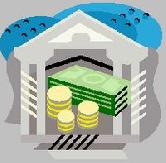
 |
|
| Financial Terms | |
| expected standard |
|
Information about financial, finance, business, accounting, payroll, inventory, investment, money, inventory control, stock trading, financial advisor, tax advisor, credit.
Main Page: business, payroll, financial advisor, finance, money, stock trading, tax advisor, investment, |
Definition of expected standard
expected standardstandard set at a level that reflects what
Related Terms:Committee, AIMR Performance Presentation Standards Implementation CommitteeThe Association for Investment Management and Research (AIMR)'s Performance Presentation standards Implementation Expected future cash flowsProjected future cash flows associated with an asset of decision. Expected future returnThe return that is expected to be earned on an asset in the future. Also called the Expected returnThe return expected on a risky asset based on a probability distribution for the possible rates Expected return on investmentThe return one can expect to earn on an investment. See: capital asset Expected return-beta relationshipImplication of the CAPM that security risk premiums will be Expected valueThe weighted average of a probability distribution.  Expected value of perfect informationThe expected value if the future uncertain outcomes could be known Gold exchange standardA system of fixing exchange rates adopted in the Bretton Woods agreement. It Gold standardAn international monetary system in which currencies are defined in terms of their gold Standard deviationThe square root of the variance. A measure of dispersion of a set of data from their mean. Standard errorIn statistics, a measure of the possible error in an estimate. Standardized normal distributionA normal distribution with a mean of 0 and a standard deviation of 1. Standardized valueAlso called the normal deviate, the distance of one data point from the mean, divided by Statement of Financial Accounting Standards No. 8This is a currency translation standard previously in Statement of Financial Accounting Standards No. 52This is the currency translation standard currently  Standard costsA budget cost for materials and labour used for decision-making, usually expressed as a per unit cost that is applied to standard quantities from a bill of materials and to standard times from a Expected ValueThe value of the possible outcomes of a variable weighted by the Standard DeviationA statistical term that measures the dispersion of a variable Cost Accounting Standards Board (CASB)a body established by Congress in 1970 to promulgate cost accounting ethical standarda standard representing beliefs about moral expected capacitya short-run concept that represents the ideal standarda standard that provides for no inefficiencies perfection standardsee ideal standard practical standarda standard that can be reached or slightly standarda model or budget against which actual results are standard costa budgeted or estimated cost to manufacture standard cost carda document that summarizes the direct standard cost systema valuation method that uses predetermined standard deviationthe measure of variability of data around standard error of the estimatea measure of dispersion that reflects the average difference between actual observations and expected results provided by a regression line standard overhead application ratea predetermined overhead rate used in a standard cost system; it can be a separate variable or fixed rate or a combined overhead rate standard quantity allowedthe quantity of input (in hours or some other cost driver measurement) required at standard for the output actually achieved for the period total expected value (for a project)the sum of the individual cash flows in a probability distribution multiplied by their related probabilities Standard deviationA measure of the variation in a distribution, equal to the Standard costA predetermined cost that is based on original engineering designs and Standard & Poor’s Composite IndexIndex of the investment performance of a portfolio of 500 large stocks. Also called the standard deviationSquare root of variance. Another measure of volatility. Gold StandardA fixed exchange rate system in which a currency is directly convertible into gold. Contract Work Hours and Safety Standards ActA federal Act requiring federal contractors to pay overtime for hours worked exceeding 40 per week. Fair Labor Standards Act of 1938A federal Act creating standards of overtime Part standardizationThe planned reduction of similar parts through the standardization Standard containersCommon-sized containers that are used to efficiently move, Expected ReturnThe total amount of money (return) an investor anticipates to receive from an investment. Efficient portfolioA portfolio that provides the greatest expected return for a given level of risk (i.e. standard Opportunity setThe possible expected return and standard deviation pairs of all portfolios that can be Portfolio opportunity setThe expected return/standard deviation pairs of all portfolios that can be coefficient of variationa measure of risk used when the standard deviations for multiple projects are approximately Other-than-Temporary Decline in Market ValueThe standard used to describe a decline in market value that is not expected to recover. The use of the other-than-temporary description as Related to : financial, finance, business, accounting, payroll, inventory, investment, money, inventory control, stock trading, financial advisor, tax advisor, credit. |